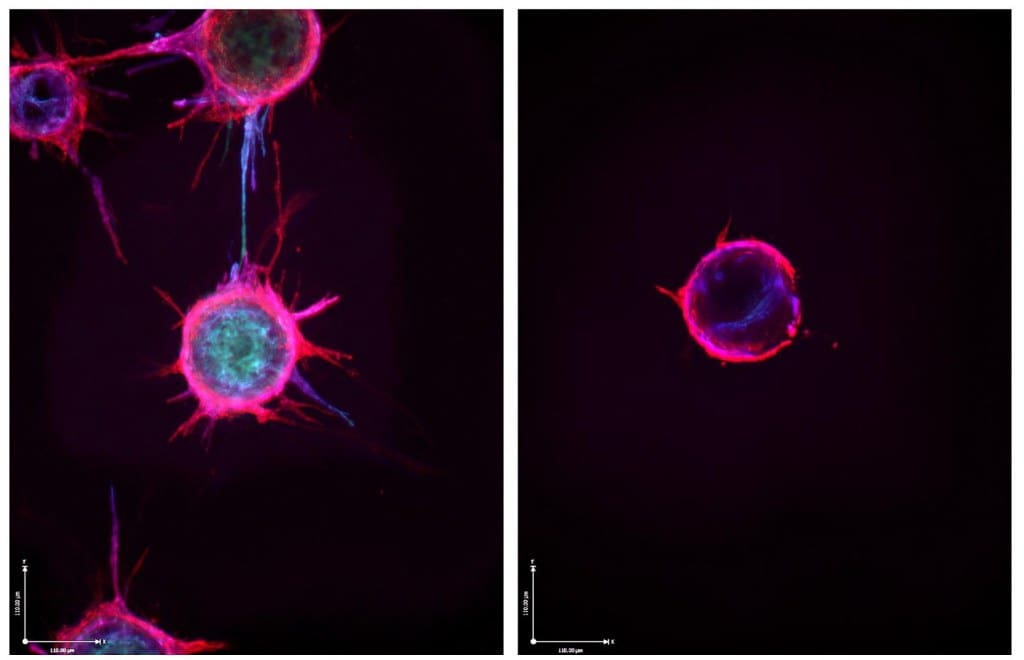Both MIRNA, as well as SIRNA are termed non-coding RNAs. They play an important role in gene regulation. They can even be utilized to cure cancer and infections as a unique class of medicinal medicines.
Both miRNA and SIRNA are short, duplex RNA molecules that target messenger RNA (mRNA) at the post-transcriptional stage to silence genes.
Key Takeaways
- miRNAs regulate gene expression by binding to partially complementary mRNA sequences, while siRNAs bind fully complementary sequences to degrade target mRNA.
- Researchers synthesize siRNAs for targeted gene silencing in labs, while miRNAs naturally occur in cells as part of their gene regulatory mechanisms.
- siRNAs are more specific in their targets, leading to fewer off-target effects, whereas miRNAs can regulate multiple genes due to their partial complementarity.
Mirna vs Sirna
miRNAs are short RNA molecules that regulate gene expression by binding to messenger RNA (mRNA) and preventing it from being translated into protein. siRNAs are double-stranded RNA molecules that can target and degrade specific mRNA molecules, effectively silencing the expression of the corresponding gene.

MicroRNA also known as MIRNA, is a single-stranded, small RNA molecule of 19-25 nucleotides. MIRNA creates a complex termed miRISC when it binds to the RNA-induced silencing complex (RISC) protein.
Then, using partial complementary base pairing, mRNAs with complementary sequences to antisense RNA strands in the miRISC complex are chosen.
Small interfering RNA, also known as SIRNA, is a relatively short, duplex RNA that silences gene expression by cleaving the messenger RNA (mRNA). Because SIRNA can only target a single mRNA molecule, it can accomplish precise gene expression suppression.
Furthermore, because SIRNA is not found in mammals naturally, it can be utilized as a targeted medicinal agent.
Comparison Table
| Parameters of Comparison | MIRNA | SIRNA |
|---|---|---|
| Occurrence | Animals and plants both have MIRNA. | Mammalian SIRNA is absent in lower animals and plants. |
| Structure | MIRNA is a single-stranded molecule that is 18-25 nucleotides long. | SIRNA is a duplex molecule with a two-nucleotide. |
| Dicer Processing Before | MIRNA is in its precursor MIRNA from before dicer processing, having 70-100 nucleotides with dispersed mismatches. The hairpin loop structure of pre-MIRNA exists. | SIRNA is a double-stranded RNA molecule of 30-100 nucleotides that is double-stranded before dicer processing. |
| Complementariness | The MIRNA and the mRNA are partly complementary. | The SIRNA or Small interfering RNA is a perfect match for the target mRNA. |
| Gene Regulation Mechanisms | MIRNA inhibits translation by causing mRNA degradation. | Endonucleolytic cleavage controls gene expression through SIRNA. |
| Regulation | The same genes from which the MIRNA is produced, as well as many others, are regulated by the MIRNA. | Only the genes from which the SIRNA is transcribed are regulated by SIRNA. |
| Clinical Applications | MIRNA can be utilized as a biomarker, therapeutic target, diagnostic tool, or pharmacological target. | As a therapeutic agent, SIRNA is used. |
What is Mirna?
MIRNA is a natural molecule, and it cannot be created artificially or synthetically in the laboratory or by the use of chemical compounds. It is, by default, present in nature. In 1993, the first MIRNA or MicroRNA, was identified in C. Elegans.
Small interfering RNA (MIRNA) is a kind of RNA that suppresses gene expression at the post-transcriptional stage.
RNA polymerase performs the transcription of MIRNA genes to create primary MIRNA (pri-MIRNA). The 5′ end of the pri-MIRNA is capped, while the 3′ end is polyadenylated, forming a double-stranded stem-loop structure.
A microprocessor complex cleaves these pri-MIRNA molecules, producing the precursor MIRNA (pre-MIRNA).
Pre-MIRNA molecules have 70-100 nucleotides in their duplex form. Whenever there is a high rate of complementarity in the target, endonucleolytic cleavage in MIRNA is rare. The MIRNA’s untranslated regions are primarily targeted.
Exportin 5 transfers pre-MIRNA molecules from its nucleus to the cytoplasm, where they are processed into MIRNA by Dicer proteins. As a result, MIRNA is an RNA duplex of 18-25 nucleotides. Dicer proteins are a kind of RNase III-like enzyme with a specific function.

What is Sirna?
Sirna is a natural and synthetic substance that may be made artificially or synthetically in a lab or with chemical components. It can also be found in the wild.
In C. Elegans, SIRNA was initially recognized in a mechanism known as RNA interference (RNAi), which involves efficient gene suppression by foreign RNA.
Inside the cell, double-stranded RNA (dsRNA) molecules can be produced through transcription of cellular genes, pathogen infection, or artificial introduction.
Dicer proteins break this dsRNA into tiny dsRNAs known as SIRNA. These siRNAs have two nucleotide overhangs at the 3′ end and are 21-23 nucleotides long.
The cytoplasmic SIRNA is linked with RISC proteins, and the sense strand of the SIRNA molecule is broken by the RISC endonuclease argonaute 2 (AGO2).
RNA intrusion is facilitated by MIRNA or SIRNA, which are smaller RNA molecules. The same process is used by both kinds of smaller RNA particles to regulate gene expression.
Scientists are now utilizing artificial SIRNA, which mimics endogenous MIRNA, to silence certain genes which cause cancer, albeit the success rate is still too low.
The antisense RNA strand of the SIRNA, which is still linked to the RISC protein, recognizes the appropriate mRNA molecule. The AGO2 component is responsible for cleaving the target mRNA molecule.

Main Differences Between Mirna and Sirna
- Micro ribonucleic acid (MIRNA) and small interfering ribonucleic acid (siRNA) are two types of RNA molecules.
- The SIRNA has essential functions in gene silencing, and MIRNA plays a crucial part in gene regulation.
- While MIRNA is a single-stranded ribonucleic acid molecule, SIRNA is a double-stranded ribonucleic acid molecule.
- Both MIRNA and SIRNA function on RNA interference (RNAi), however, when combined with an RNA-induced silencing complex, SIRNA, which is double-stranded, is better for cleaving RNA (RISC).
- While MIRNA attaches to its target poorly at many locations, SIRNA attaches to its target perfectly at just one.



